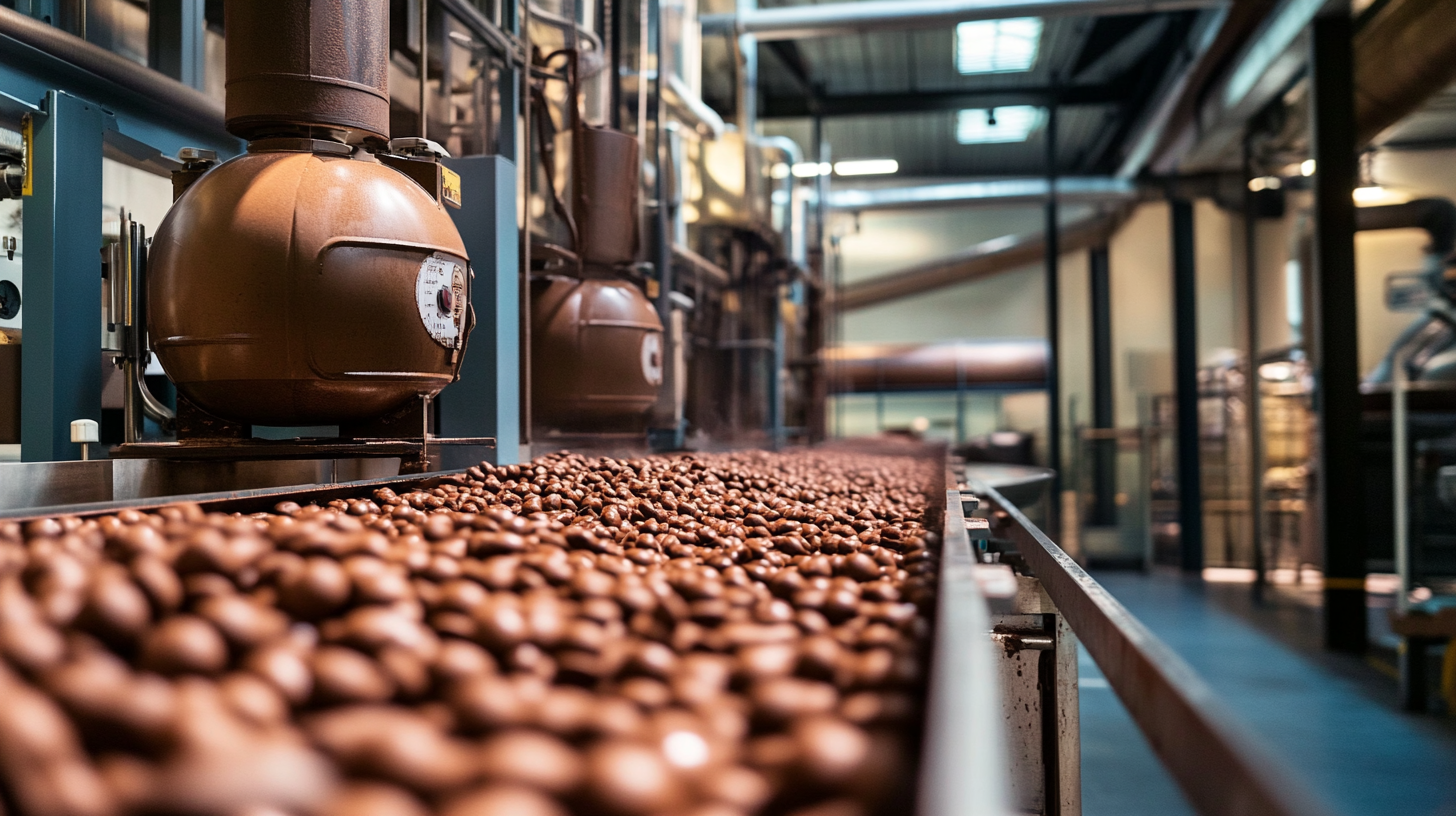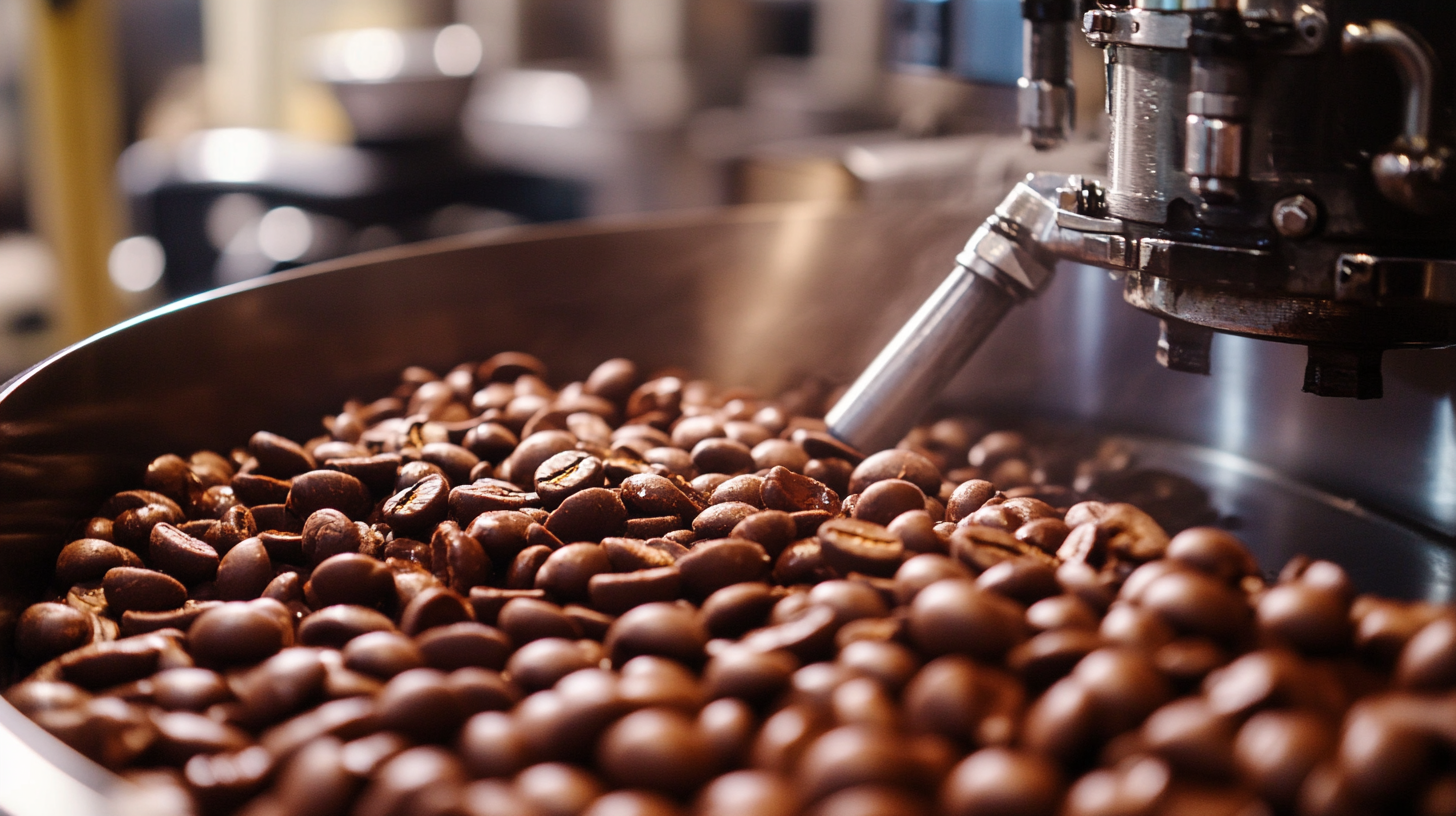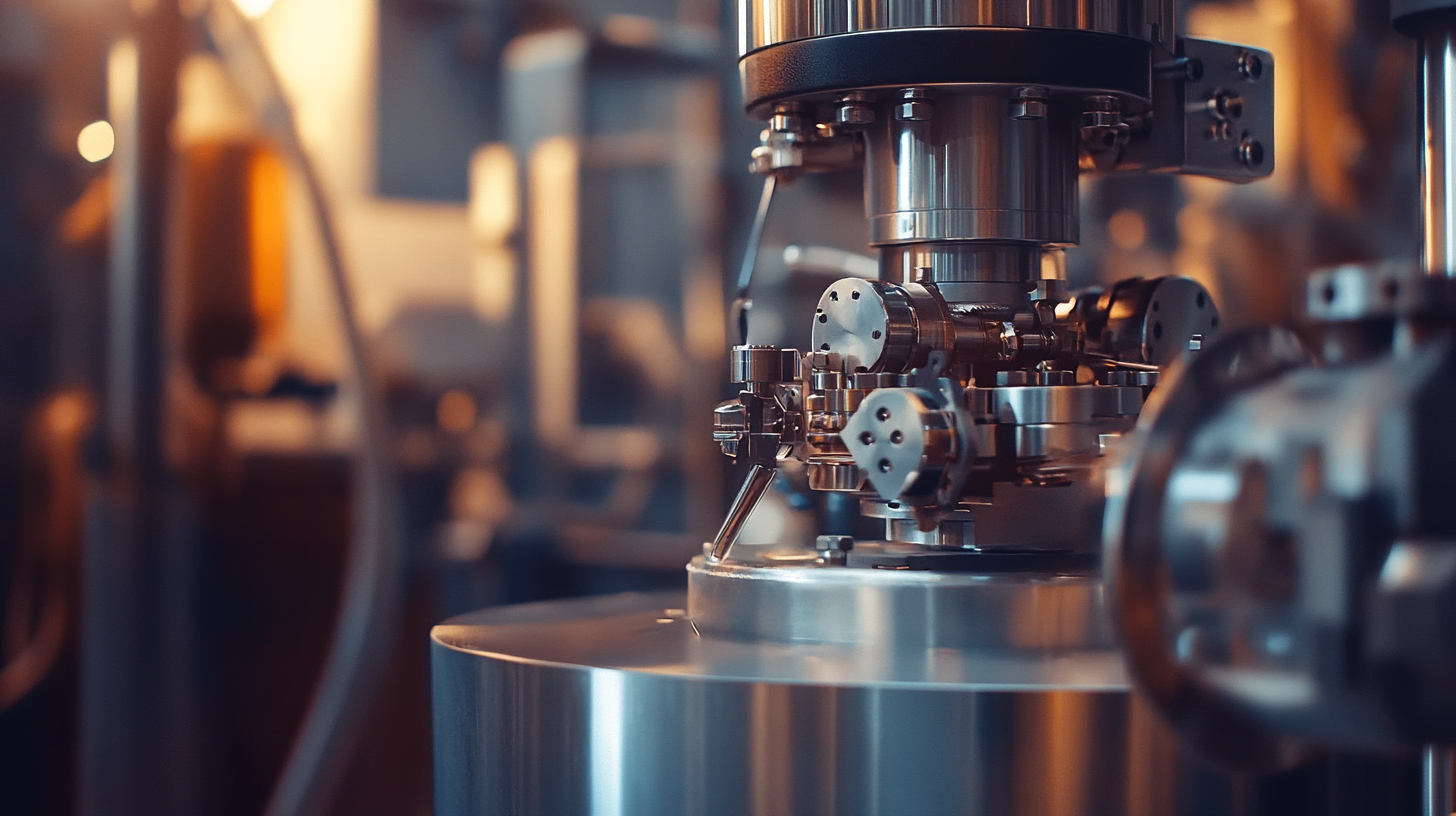Understanding Global Standards for Advanced Chocolate Machines and How to Choose the Best One
The last several years have seen the rise of the chocolate industry, with the global market value expected to reach around $184 billion by 2024, as per the report of Mordor Intelligence. In this expansion, manufacturers are willing to invest in advanced chocolate machines capable of a considerable degree of efficiency in production, as well as maintaining product quality. The greater the increase in demand for unique flavors and luxury products, the greater the need for advanced machines. Therefore, it becomes imperative for manufacturers to be conversant with global standards with regard to these machines.
The choice of chocolate machine goes beyond the technological aspects, for it has huge implications in determining the successful operation of a chocolate business. According to a report from Research and Markets, the chocolate-processing equipment market is predicted to grow at a CAGR of 6.5% till 2025. This emphasizes that the key players in the industry need to familiarize themselves with world standards and innovations in chocolate machinery in order to have a competitive edge. In this blog, we will look into the major factors that should be considered while selecting advanced chocolate machines and the world standards governing their design and operation.

Overview of Global Standards in Chocolate Machine Manufacturing
Working in a world of constant change in chocolate production, knowing the global standards about advanced chocolate machines is critical to manufacturers to guarantee quality, safety, and efficiency. The manufacturing of chocolate machines is regulated by various guidelines at the international level. These standards cover everything from the individual materials used to requirements relating to energy efficiency. Specific organizations such as the International Organization for Standardization (ISO) and the European Committee for Standardization (CEN) are key in drafting such standards that ensure the performance of the machines also abides by safety protocols. Most cases involve the materials used for manufacturing machines. Chocolate making equipment usually has to meet very specific food regulations, with the internal elements being food safe, that is, any surface of a machine that would directly touch the product must be made of a food-safe material. Further, modern chocolate machines should take precautionary measures that would help in the prevention of damage through its use and in the efficiency of cleaning. Not only will compliance with these standards assure consumer safety, but it will also build confidence in the brand. Energy efficiency is yet again a major area that these standards worldwide touch on. With the increasing trend of sustainability, it has become a challenge for manufacturers to come up with effective machines with minimum energy consumption. There are standards related to energy consumption and emissions, which have helped identify machines that are performing well and environmentally friendly too. Therefore, considering these global standpoints, companies can successfully study the criteria of using a chocolate machine that will serve their production needs in accordance with expectations given by the industry.

Key Features to Look for in Advanced Chocolate Machines
Several key features can greatly affect the efficiency, quality, and user experience when selecting advanced chocolate-making machines. One of the most primal factors is the temperature control system, as for production of chocolate, it is precisely important to control temperatures with utmost diligence, as it will have an influence on viscosity and the tempering operation. Machines possessing advanced sensors equipped with customizable settings allow for accurate and consistent flow, keeping the chocolate in its required decorator state and organoleptic acceptability until the end of the production line.
Automation is another key point to ponder. Automated machines will minimize labor costs while maintaining high efficiency levels of production through reduced human error. Therefore, look for machines that can be programmed with settings so that the operator can start and control production cycles with minimum involvement. Such cleaning systems incorporated into the machines would enhance hygiene and save time, features that are vital in a food-producing environment.
Capacity is equally paramount in determining the right choice of any chocolate machine. Determine the amount of chocolate you wish to produce and choose a machine that can fit these requirements without compromising quality. The flexibility of the design is also to be desired-so that a variety of types or shapes of chocolates can be produced. The wider range of applications available to your operation means an ability to react to trends in the marketplace and the tastes of the consumers with lightning speed, a true advantage in this rather volatile environment of chocolate production.

Evaluating Compliance with International Quality Standards
It is indeed paramount that manufacturers ensure production excellence on the foundation of international quality standards. These standards guarantee smooth operation of machines and consistent quality of products while meeting health and safety regulations. In simple terms, the International Organization for Standardization (ISO) sets parameters for equipment used in the production of chocolate and ISO 9001 for quality management systems, ISO 22000 for food safety management, etc. By complying with such standards, a manufacturer would improve product quality and, in parallel, enhance consumer confidence in the brand.
Quality assurance must therefore take into consideration some international standards when evaluating chocolate machines. These include checking that equipment meets the Global Food Safety Initiative (GFSI) benchmarks to ensure that the processes carried out on said equipment do not pose any food safety risks. Food and Agriculture Organization (FAO) reports indicate that compliance with these standards can reduce contamination risk by 50% at most. Furthermore, following Ecovadis sustainability metrics has become just as important since 83% of consumers are likely to engage with a trustworthy brand with a responsible sourcing policy.
The selection of the correct chocolate machine would also include the machine's ability to comply with specific regional regulations, e.g., the FDA guidelines in the United States or the EU's General Food Law. Having machines designed with these guidelines in mind helps both in the production process and legal risk reduction. A good practice would be to line up with suppliers with a long account of certification and adherence to global quality standards, thereby securing a long-term essence of functionality and reliability.

How to Assess the Reliability and Efficiency of Chocolate Equipment
While the reliability and efficiency of the machines should largely weigh the decision to invest in advanced chocolate equipment, reliability refers to the consistency of a machine in performing its assigned tasks without failure. Therefore, potential buyers should ascertain the vendor's reputation, customer reviews, and testimonials regarding the reliability of the particular equipment on their radar. One factor to take into account is how long the company has been in business; firmness tends to follow with longevity. One should also look into the warranty and servicing agreements, which would also give an idea of the manufacturer's commitment to quality and customer support.
Efficiency ranks next: how well a machine converts raw materials into finished products, practically eliminating wastage and energy consumption. Buyers should look for production speed and energy efficiency in potential equipment. Operational efficiency can be considerably improved with utilities like automation, adjustable settings, and ease of cleaning. It may also be beneficial for prospective owners to request on-site demonstrations or trial runs, so they may observe the performance of specific models in real situations, ensuring that the equipment under consideration meets their production objectives and quality standards. Giving precedence to these parameters will help manufacturers in selecting chocolate machines that enhance productivity while maintaining the quality that is so dearly regarded in this line of business.
Tips for Choosing the Right Chocolate Machine for Your Production Needs
You really need to learn about the global standards, as well as the right chocolate machines, for your production. This is what verifies that these machines are not just going to meet the expectations of quality and efficiency but also all other safety regulations and requirements. The chocolate industry may vary largely in what the production scale is. Big and mighty facilities may easily make chocolates at an industrial scale, and the artisanal factories operate on a much smaller scale. The International Chocolate Organization estimates that the chocolate market in the world will expand to about USD 162.8 billion by 2024. Hence, it is essential to find the right machinery for your production as the demands increase.
It is here that production capacity becomes really important, and a production facility must be scalable with respect to your quality and/or time. One such company offering requirements for basic efficiency standards, such as Food Processing Magazine, recommends an 85 percent minimum efficiency rate, which can be really penalty-wise with profits. Furthermore, such a modular design or automation feature typically leads to reduced cost of labor and increases its flexibility to meet fluctuating demands.
Food safety compliance is yet another pertinent consideration. The FDA has guidelines, and some other agencies have laid down other regulations for such food-production equipment, particularly with chocolate since it is very susceptible to contamination. Investing in machinery that meets these quality assurance protocols not only safeguards the product but also impresses consumers. Current analytics recognized in the industry indicate that about 40% of consumers are willing to spend extra on this kind of making equipment that follows the safety standard. How they shop, and spend, is influenced by such conditions.
At the end of the day, efficiency, compliance, and QA will settle in the balance of selecting the correct chocolate machine: towards present production requirements, as well as future scope for growth. Staying updated on innovations in technology and methods for production in the chocolate industry will always be one of the keys to profitability as trends evolve.